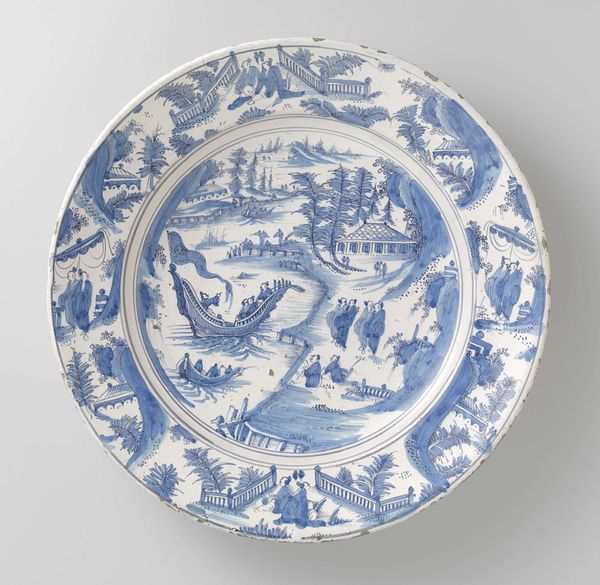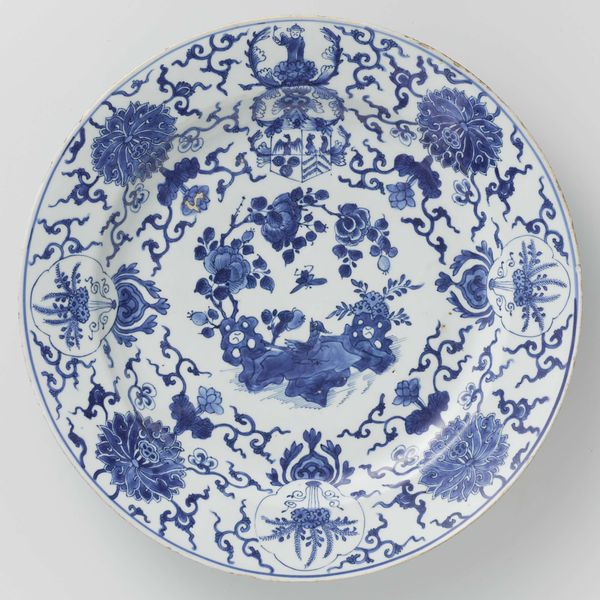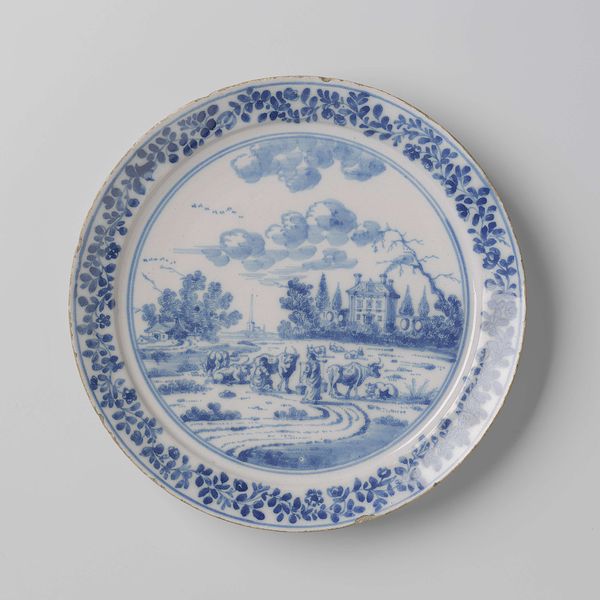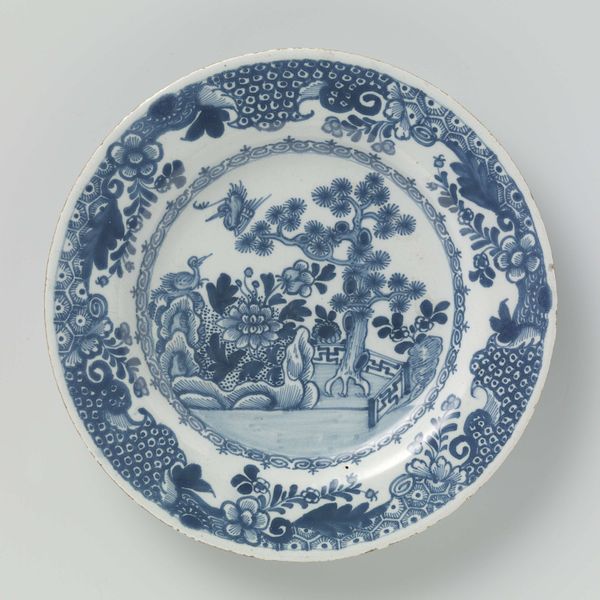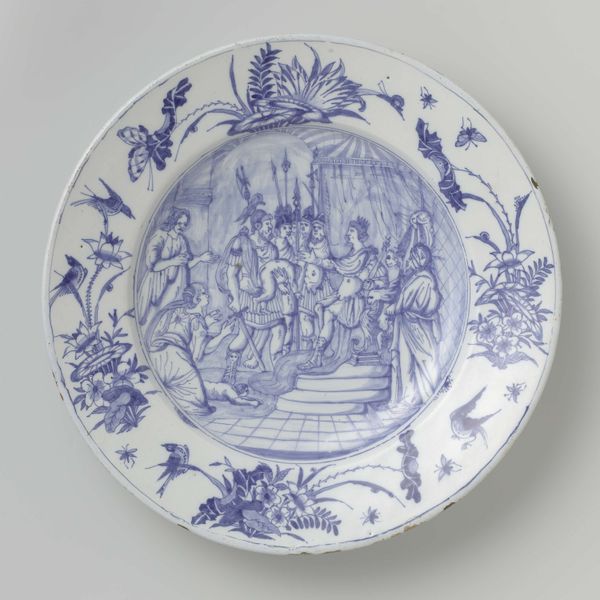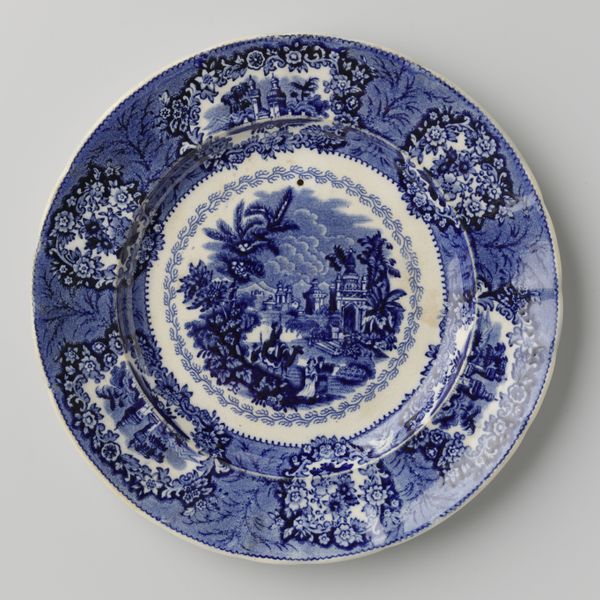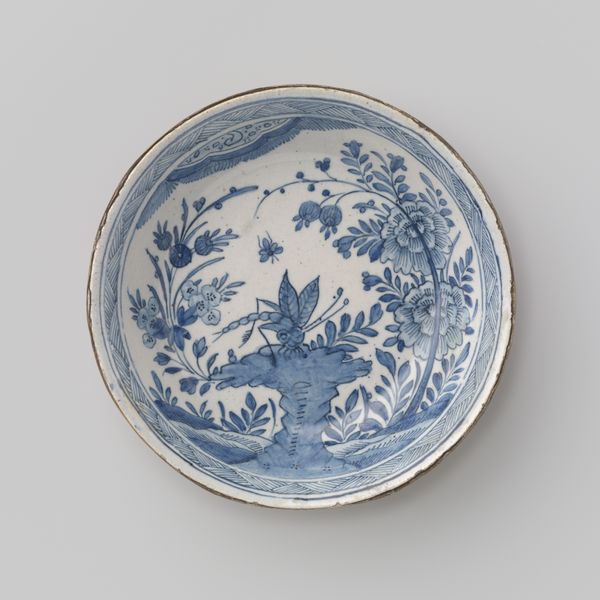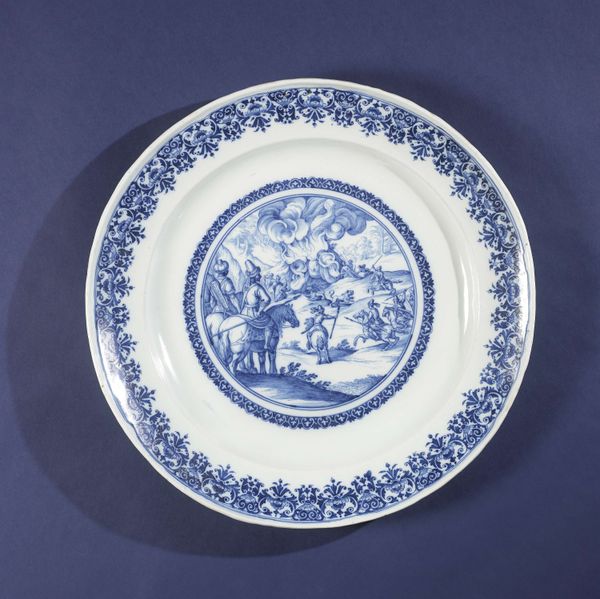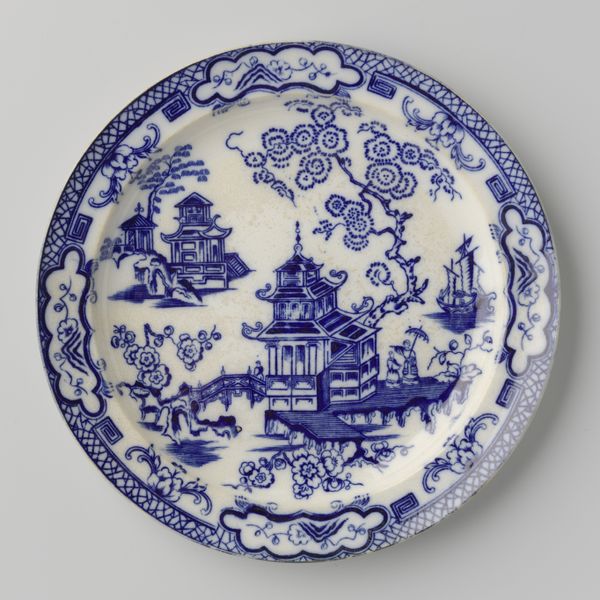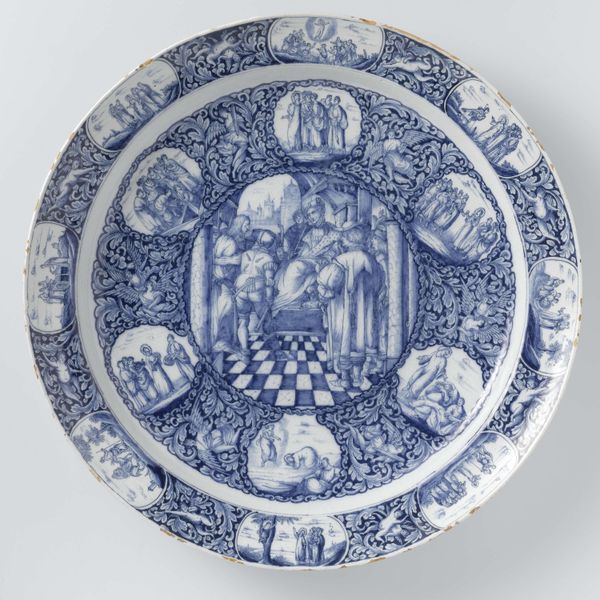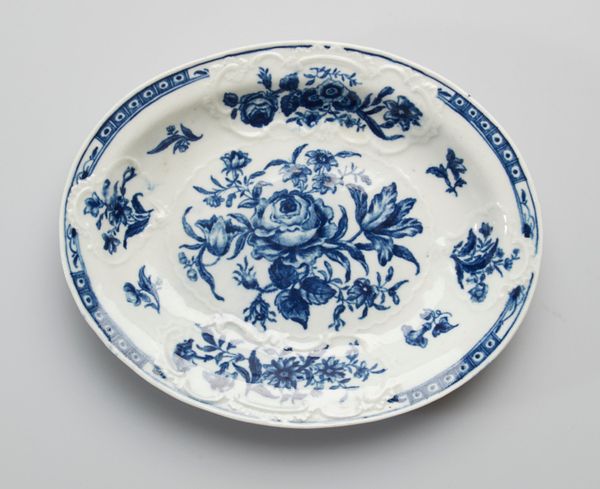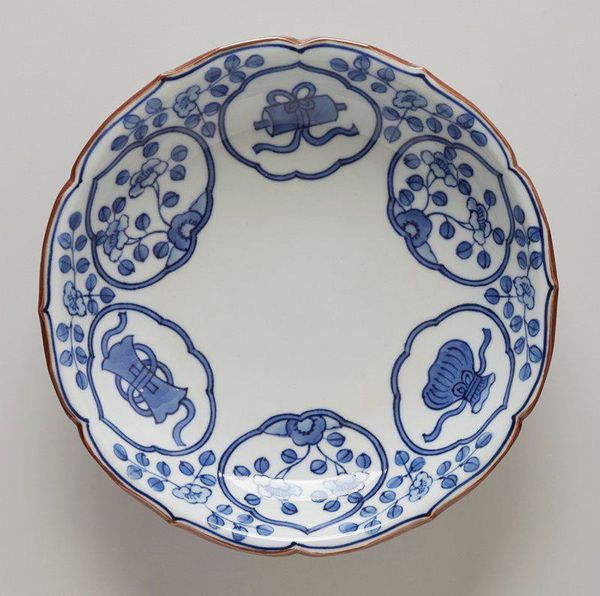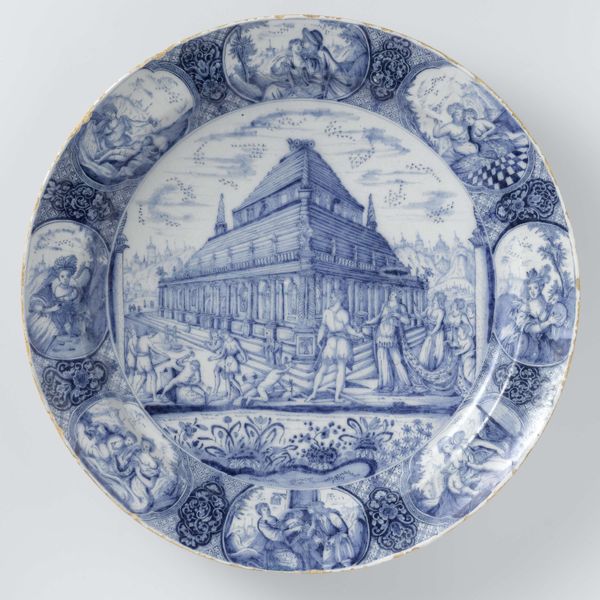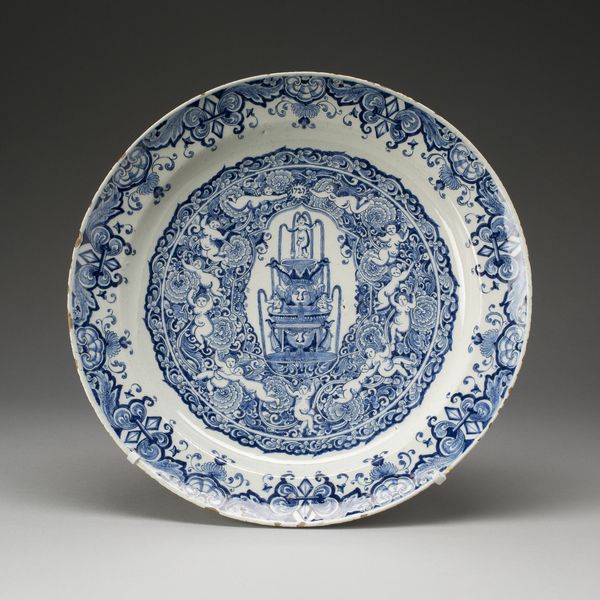
tempera, ceramic
#
narrative-art
#
tempera
#
dutch-golden-age
#
asian-art
#
ceramic
#
stoneware
#
ceramic
#
genre-painting
Copyright: Rijks Museum: Open Domain
Here we have two Delftware dishes by Willem Jansz. Verstraeten, painted in blue. Central to their design is a scene of gathering and speech. Notice the recurring motif of figures elevated on platforms, delivering orations to assembled crowds. This echoes the ancient Roman tradition of public speaking, where the elevated rostrum symbolized authority and commanded attention. But what do these gatherings signify beyond mere communication? Reflect on the enduring human need for collective identity and shared purpose. Across cultures and epochs, from ancient amphitheatres to modern-day rallies, these gatherings reflect our deep-seated desire for belonging. The gesture of the speaker, raising their hand, resonates with the 'pathos formula' – a visual language of emotion—a powerful force engaging viewers on a deep, subconscious level. This symbol has resurfaced, evolved, and taken on new meanings in different historical contexts.
Comments
rijksmuseum about 2 years ago
⋮
In the mid-17th century Dutch potters tried to produce earthenware that more closely resembled Chinese porcelain. They adapted the firing technique so that the dishes could be thinner, and the white tin glaze improved. While the painter of these dishes derived inspiration from Chinese porcelain, he added imaginary motifs, such as the pulpit and parts of the landscape.
Join the conversation
Join millions of artists and users on Artera today and experience the ultimate creative platform.
